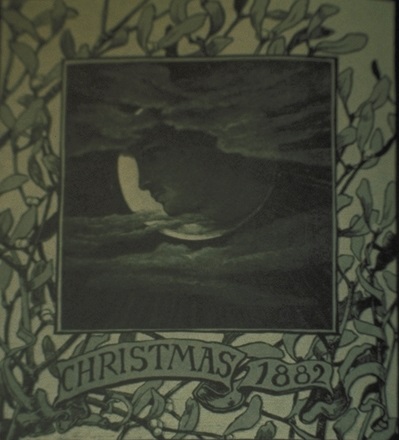
This is the cover of Harper's Christmas issue from 1882. It is an idealized creation by Elihu Vedder. We can be quite sure that Vedder never actually saw a moon that looked like this. We can be sure there is little correspondence between the natural form as it existed in Nature and the idealized image Vedder created in his mind. Unlike the actual "man in the moon," this idealized image dominates and replaces the natural scene. The clouds and the moon are realistic, but the face area does not double as a representation of Nature, so much so that in this case, we cannot call the face a pareidolia. We recognize that the picture is not meant to be a realistic representation of physical Nature as it exists, since this "man in the moon" is not similar to "the man in the moon" as it appears in Nature.